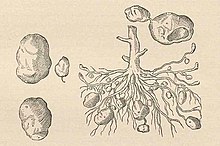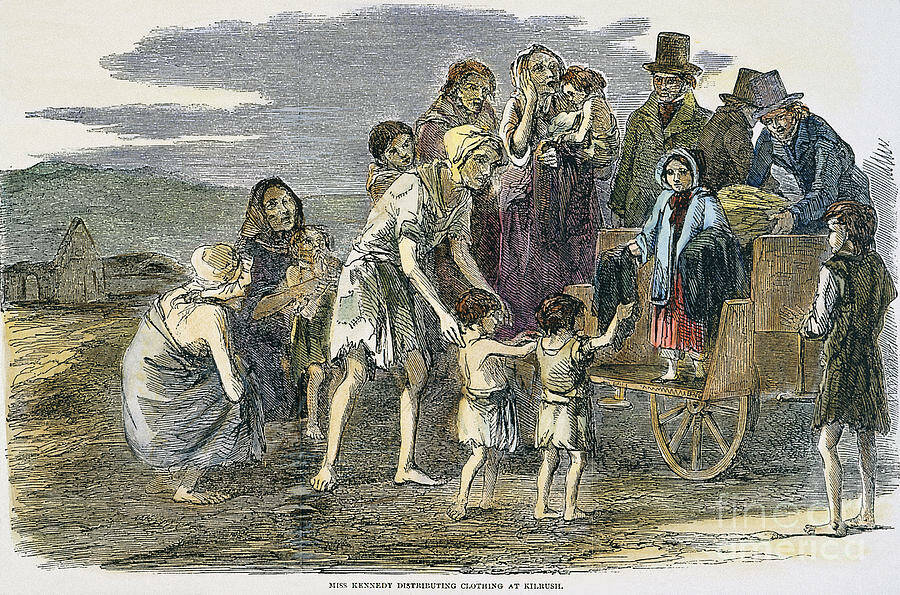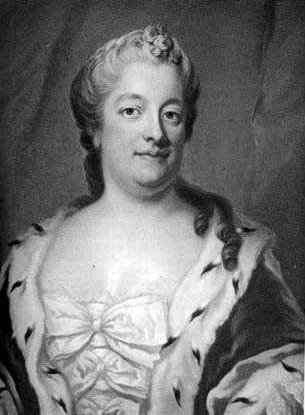History of Potatoes
Today potatoes are grown in different countries and used as a staple food. The history of this vegetable is genuinely unique, since its history began more than ten thousand years ago in the territory adjacent to Lake Titicaca. The Indians tried to grow wild potatoes and spent a lot of time and effort on this. The homeland of potatoes is Chile, Bolivia, and Peru. The plant became an agricultural crop only after five thousand years.
For the first time Europeans tried potatoes, which were native to South America, in the 16th century. In 1551, the geographer Pedro Cieza da Leon brought it to Spain and later described the nutritional properties and taste of the potato (Laws, 2019). Figure 1 shows the world’s first image of a potato, made around 16th century. The spread of potatoes in other European countries was primarily because of human botanists. They enthusiastically studied an unusual plant, sent tubers to their colleagues, and grew an exotic novelty next to medicinal herbs in their gardens.

However, the vast popularity of the vegetable was still far away from modern recognition since potatoes were treated with caution outside the scientific community. One of the reasons was that initially, a variety spread of this vegetable in Europe, the tubers of which had a bitter aftertaste and seemed completely unsuitable for food. In addition, botanists had found that the leaves and fruits of potatoes contain a poisonous substance called solanine (Laws, 2019). Therefore, it is impossible to feed livestock with the tops of the plant. Even where livestock was fed with tubers, people refused to eat them.
The exception was the tables of noble people, where small portions of potatoes were served for fun. In the 18th century, the wife of Louis XVI, Marie Antoinette, ordered the addition of boiled potatoes to the royal menu, and she wore potato flowers on her dress as a brooch (Laws, 2019). The real success came to potatoes a little later – at the turn of the 18th and 19th centuries, when soldiers and horses needed to store a lot of food during the years of the Napoleonic wars (Gullino, 2021). The next stage in the flowering of the vegetable’s popularity came in the middle of the 19th century when the working class formed in Europe. Potatoes, cabbage, black and gray bread, and salted fish have become an essential part of the diet of the poor population. When bread prices rose during the famine years, potatoes remained affordable for everyone.
In one of the countries of Europe, life without potatoes gradually became unthinkable, and this painful addiction led to terrible events. Potatoes came to Ireland in the 16th century, brought by anglers from the Basque country. For people, the new plant was a natural gift: the climate of Ireland did not have the conditions for growing a large number of crops, but potatoes took root well on wet and stony soils. In the second half of the sixteenth century, the Irish began to actively grow potatoes and add them to various dishes, unlike their neighbors. In 1845, due to phytophthora, the first massive crop failure occurred, as a result, famine began, and a large number of residents died (Gullino, 2021). Figure 2 depicts the Great Potato Famine in Ireland.

Growing Popularity of Potatoes
Potatoes, like bread, could be purchased by anyone, regardless of social status. Potatoes and bread acted as the basis of the diet. This vegetable, like bread, is immensely satisfying despite the different nutritional values; a few tubers are enough to fulfill one’s hunger. Boiled potatoes contain a lot of starch: this complex carbohydrate is absorbed gradually, maintaining blood sugar levels for a long time, and a person quickly fills up (Dupuis & Liu, 2019). Due to its taste, the vegetable is often compared to bread. It is added to almost all dishes. Potatoes are combined with cereals, any meat, and cereals.
Over time, potatoes began to be cultivated all over the world. Even the poor could afford it because the plant is able to adapt to any climatic conditions quickly. Today, the benefits and chemical composition of the product have been sufficiently studied by experts. Farmers have learned how to care for the crop competently and protect it from diseases and pests. Potatoes are now one of the staple foods and are an indispensable ingredient in many culinary recipes.
In recent decades, sweet potatoes have gained particular popularity. In addition, while global sweet potato production has been steadily declining compared to the last century, as shown in Figure 3, this has remained stable over the past decade (Wang et al., 2017). This variety of potatoes received recognition due to its low-calorie content and high content of valuable substances. Figure 4 shows the nutrition value of raw sweet potatoes. If one looks at this table, it becomes clear that a high content of carbohydrates provides energy in the human diet.


Potato Variety: Benefits, Dishes and More
More than 200 potato dishes are known to culinary specialists, and starch is used in confectionery, textile, and sausage production. The tubers of this product contain an average of 14 to 22% starch and 2-3% protein (Kim et al., 2019). Potato alcohol is still indispensable in the pharmaceutical, perfumery, and alcoholic beverage industries. Potatoes are a valuable source of B vitamins (B1, B2, B6), C, PP, K, and carotenoids (Kim et al., 2019). Approximately half of the daily requirement for vitamin C can be met by potatoes.
Fresh potatoes are baked, boiled, or fried and used in a wide variety of recipes: mashed potatoes, hash browns, potato dumplings, twice-baked potatoes, potato soup, potato salad, and baked potatoes, to name a few. However, the global consumption of potatoes as a food item is moving away from fresh potatoes toward value-added processed foods. One of the staples in this category is frozen potatoes, which make up the bulk of the french fries served in restaurants and fast-food chains around the world (Ngobese & Workneh, 2017). Figure 5 plots the rise in imports and exports of frozen french fries in South Africa.

Potato flour, another dehydrated product, is used to bind meat mixtures and thicken sauces and soups in the food industry. A fine, tasteless powder, potato starch provides a higher viscosity than wheat and corn starches and results in a more palatable product (Potato Processing and uses 2017). Figure 6 shows Eva Ekeblad, who was a countess from Sweden who discovered potato starch (Who was Eva Ekeblad, 2017). It is a thickener for sauces and stews and a binder for cake mixes, doughs, cookies, and ice cream. In Eastern Europe and Scandinavia, crushed potatoes are heated to convert their starch into fermentable sugars used to distillate alcoholic beverages such as vodka and aquavit. Thus, potatoes have a long history and are in great demand in the modern world.

References
Damto, T., & Chala, G. (2019). Effect of blanching and frying time on the sensory quality of fried sweet potato chips. Food and Nutrition Science – An International Journal, 3. Web.
Dupuis, J. H., & Liu, Q. (2019). Potato starch: A review of physicochemical, functional and nutritional properties. American Journal of Potato Research, 96(2), 127–138. Web.
Gullino, M. L. (2021). Late blight of potato: The Great Irish Famine. Spores, 15–22. Web.
Kim, J., Soh, S. Y., Bae, H., & Nam, S.-Y. (2019). Antioxidant and phenolic contents in potatoes (solanum tuberosum L.) and micropropagated potatoes. Applied Biological Chemistry, 62(1). Web.
Laws, B. (2019). Potato. Haynes Publishing.
Ngobese, N. Z., & Workneh, T. S. (2017). Development of the frozen French fry industry in South Africa. American Journal of Potato Research, 94(1), 1–13. Web.
Potato processing and uses. International potato center. (2017). Web.
Wang, S., Nie, S., & Zhu, F. (2017). Chemical constituents and health effects of sweet potato. Food Research International, 89, 90–116. Web.
Who was Eva Ekeblad and how did she make flour and alcohol out of potatoes? (2017). The Telegraph. Web.
Picture References
Clusius, C. (1600er). Papas Peruanorum (the potato of the Peruvians). [Painting]. Web.
Damto, T., & Chala, G. (2019). The nutritional value of raw sweet potato per 100g. Web.
Leech, J. (1846). Great Potato Famine in Ireland. [Painting]. Web.
Lundberg, G. (1750er) Eva Ekeblad. [Painting]. Web.
Ngobese, N. Z., & Workneh, T. S. (2017). Volume of frozen french fries imported and exported in South Africa. Web.
Wang, S., Nie, S., & Zhu, F. (2017). World production of sweet potatoes. Web.